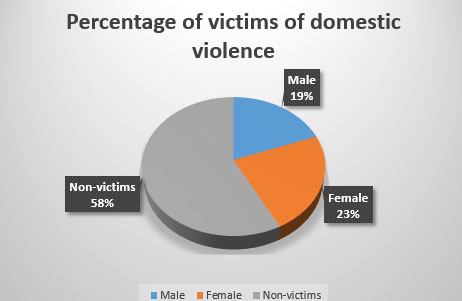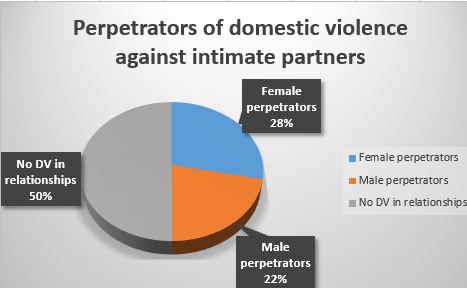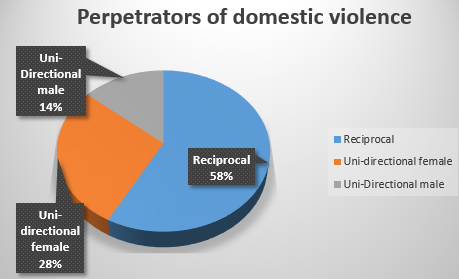
It has been shocking to watch the attempts to reduce domestic violence, morph into a worldwide domestic violence industry determined to ignore evidence showing the complexities of violence in the home while avoiding prevention strategies that would tackle the real risk factors underpinning this vital social issue.
The whole thing is based on the erroneous notion that domestic violence is caused entirely by men, out of disrespect for women. Overlooked in this campaign is the huge amount of domestic violence perpetrated by women. A typical example is: four women conspire to cold-bloodedly execute boyfriend
Key organizations all sing from the same songbook, regularly distorting statistics to present only one part of this complex story.
This type of omission is everywhere today, with most of our bureaucracies downplaying statistics that demonstrate the role of women in family violence, while highlighting evidence of male aggression.
The fact remains that almost a quarter (23.1 percent) of victims of intimate partner homicide are male – and we hardly ever hear about these deaths.
It is not serving our society well to downplay the fact that female violence can also be lethal, towards men and towards children. Women account for more than half of all murders of children (52 percent).
The Partner Abuse State of Knowledge Project
In the largest ever such research project, and in an effort to bring together, in a rigorously evidence-based, transparent and methodical manner, the existing knowledge about partner abuse with reliable up-to-date research, the senior editor of the peer-reviewed journal, Partner Abuse, recruited family violence scholars from the United States, Canada and the UK to conduct an extensive and thorough review of the empirical literature related to family violence in March 2010.
In this unprecedented undertaking, a total of 42 scholars and 70 research assistants across 20 universities and research institutions spent two years researching their topics and writing the results. Approximately 12,000 studies were considered.
Here is a brief summary of the findings:
 Section One: Rates of Male and Female Victimization. The group studying information in this area analyzed 249 publications comprising over 1 million subjects. They found that, over their lifetimes, about 23% of women reported physical victimization versus 19.3% of men.
Section One: Rates of Male and Female Victimization. The group studying information in this area analyzed 249 publications comprising over 1 million subjects. They found that, over their lifetimes, about 23% of women reported physical victimization versus 19.3% of men.
As to public policy, the authors stated the obvious:
This comprehensive review… documents the need for gender-inclusive responsiveness to this wide-ranging public health problem. In particular, there are currently few services for male victims and the high rates of violence experienced by women and men suggests a need for treatment and intervention strategies for victims of both sexes.
In other words, the roughly half of all DV victims who are men have nowhere to turn for help, and they need it.
 Section Two: Rates of Male and Female Perpetration. The authors studying data in this area analyzed 111 separate data sets comprising about 250,000 subjects. They found that about 25% of those subjects reported perpetrating physical violence against a current partner or one in their last relationship. That represented 28.3% of women and 21.6% of men who perpetrated violence against an intimate partner. Subjects came from across the industrialized, English-speaking world.
Section Two: Rates of Male and Female Perpetration. The authors studying data in this area analyzed 111 separate data sets comprising about 250,000 subjects. They found that about 25% of those subjects reported perpetrating physical violence against a current partner or one in their last relationship. That represented 28.3% of women and 21.6% of men who perpetrated violence against an intimate partner. Subjects came from across the industrialized, English-speaking world.
The authors note that “gendered explanations of IPV do not adequately account for our findings.” Of course, the domestic violence (DV) establishment will hasten to say that rates of domestic violence perpetration don’t deal with the severity of violence, only the incidence.
True, but the authors of the study anticipated that argument. They stated:
Findings should be used to support the development and implementation of interventions that acknowledge the use of violence by women in intimate relationships but also recognized how participants’ treatment needs may differ.
That is, the difference in the severity of domestic violence should no longer be used by the DV establishment as an excuse to deny services to male victims or female perpetrators. Those interventions should be tailored to the needs of those victims and perpetrators.
 Section Three: Rates of Bi-Directional and Uni-Directional IPV. In this area, 50 separate studies that recorded rates of bi-directional versus uni-directional violence were analyzed. Researchers found that, in the largest samples studied, among couples reporting domestic violence, 57.9% reported reciprocal or bi-directional violence with the remainder, 42.1%, reporting uni-directional violence. In the uni-directional group, women were over twice as likely (28.3%) to perpetrate violence when compared to men (13.8%).[58]
Section Three: Rates of Bi-Directional and Uni-Directional IPV. In this area, 50 separate studies that recorded rates of bi-directional versus uni-directional violence were analyzed. Researchers found that, in the largest samples studied, among couples reporting domestic violence, 57.9% reported reciprocal or bi-directional violence with the remainder, 42.1%, reporting uni-directional violence. In the uni-directional group, women were over twice as likely (28.3%) to perpetrate violence when compared to men (13.8%).[58]